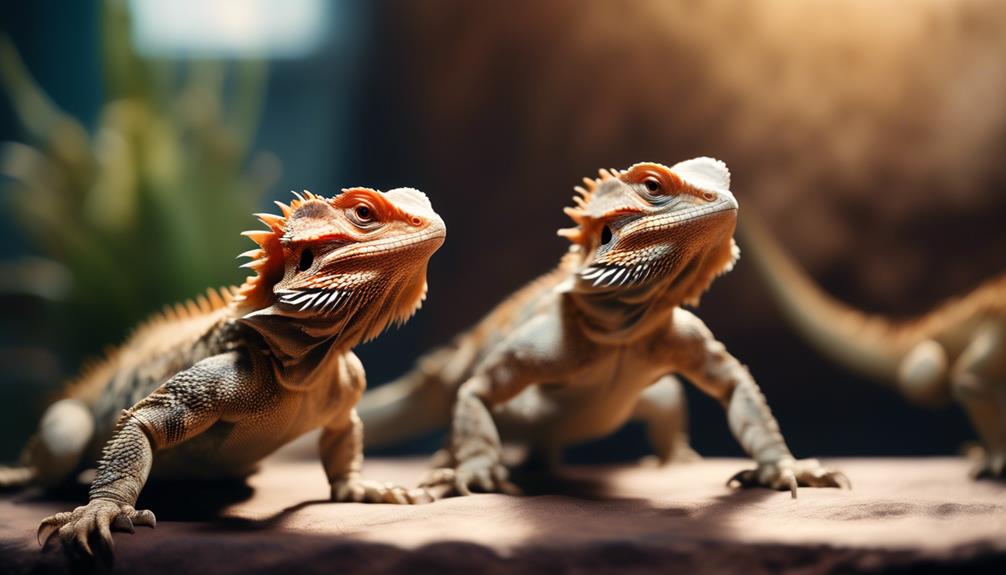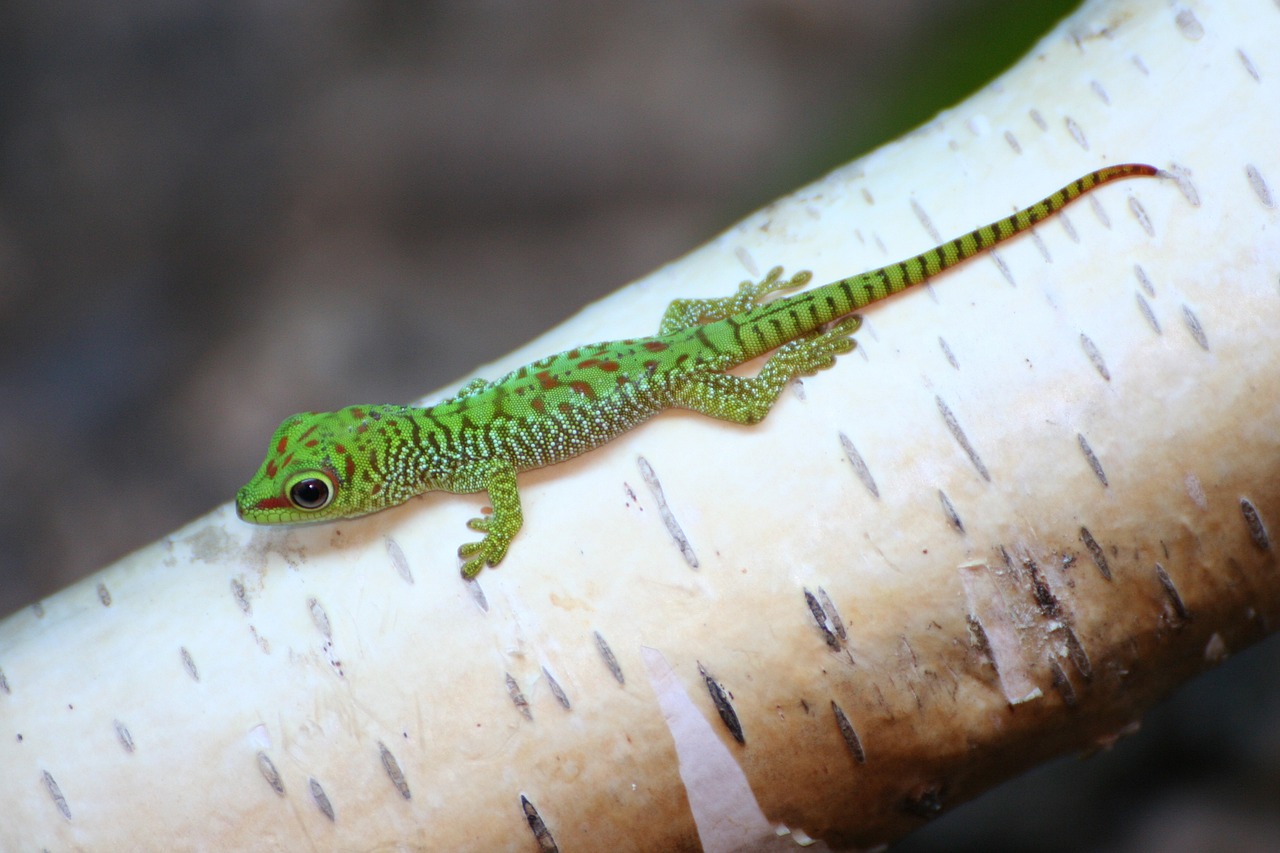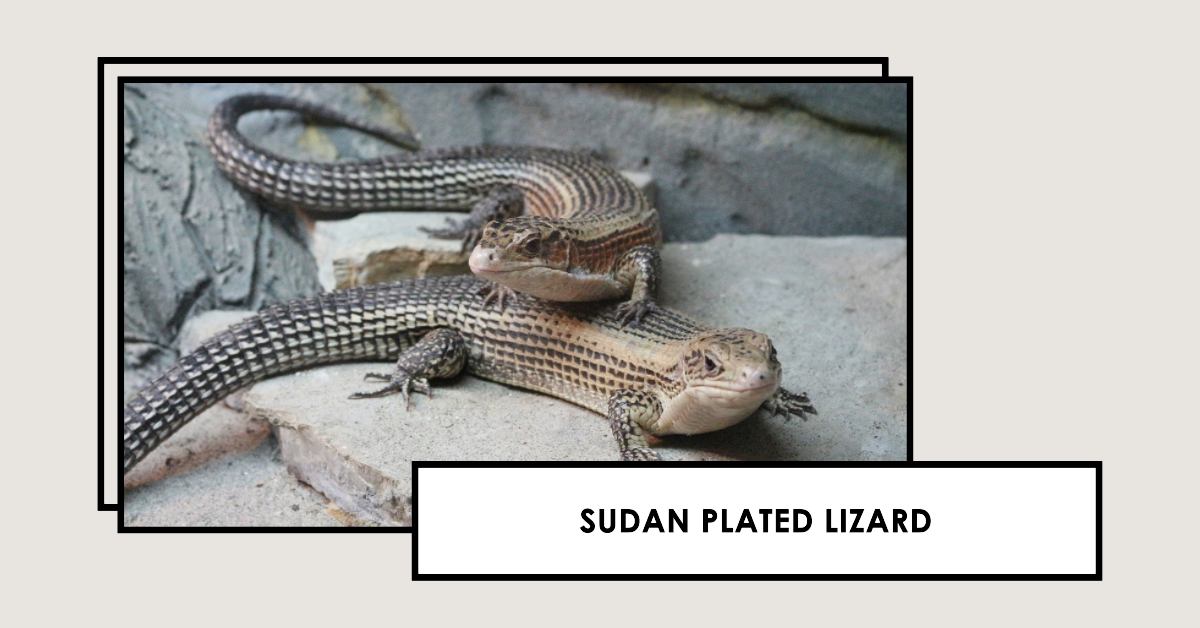Like a hidden code deciphered only by those in the know, arm waving in bearded dragons reveals a secret language that captivates our curiosity. As we observe these enchanting creatures, we cannot help but wonder about the meaning behind their mysterious arm gestures.
What are they trying to tell us? In this discussion, we will uncover the intricacies of this unique behavior, delving into its purpose, its various forms of communication, and the significance it holds in the relationship between owners and their scaly companions.
Prepare to be amazed as we unravel the enigma of arm waving and unlock the secrets of the bearded dragon's hidden language.
Key Takeaways
- Arm waving in bearded dragons can serve as a form of communication and social behavior.
- Young bearded dragons are more likely to engage in arm waving than mature adults.
- Arm waving can indicate submission, acknowledgement, and alertness to potential threats.
- Reciprocating a wave from a bearded dragon can be seen as a friendly response and can strengthen the bond between owner and dragon.
Reasons for Arm Waving

The reasons for arm waving in bearded dragons can be attributed to various factors. One reason is signaling submission. Another reason is mistaking objects for other animals. Additionally, arm waving can be a way of acknowledging the presence of another bearded dragon. Furthermore, arm waving serves as a way of alerting to potential threats.
Arm waving plays a crucial role in the social hierarchy of bearded dragons. It serves as a form of territorial communication, allowing them to establish boundaries and assert dominance. Young beardies are more likely to engage in arm waving compared to mature adults.
In addition to its role in social hierarchy, arm waving is also a means of communication among bearded dragons, reflecting their social behavior. It can also be seen as a friendly gesture towards their owners, indicating a desire for interaction and acknowledging their presence.
Understanding the reasons behind arm waving enhances the owner-dragon relationship and provides insights into the complex world of bearded dragon communication.
Communication Through Arm Waving
Arm waving in bearded dragons serves as a means of communication, allowing them to convey their presence, intentions, and level of threat to other dragons or their owners. This non-verbal communication signal plays a crucial role in the cross-species communication dynamics within the bearded dragon community.
When a bearded dragon waves its front arm, it's indicating that it's present and not to be surprised. This gesture also signals that the dragon isn't a threat and won't attack. In fact, waving back can be interpreted as a friendly response, fostering positive interaction and strengthening the bond between the dragon and its owner.
Understanding the meaning behind arm waving enhances the owner-dragon relationship and provides valuable insights into the social behavior of these fascinating creatures.
Interpretation of Arm Waving

Interpreting the waving motion of bearded dragons involves understanding its multifaceted nature and contextual variations. The meaning behind arm waving can be complex and influenced by various factors. Here are some key points to consider:
- The meaning behind arm waving:
- Usually, it's a gesture of submission.
- It can also be seen as a way of saying 'Hi' to their owner.
- Arm waving may be a form of communication to other bearded dragons.
- It reflects the social behavior of beardies.
- The meaning varies depending on the context.
- Cultural significance of arm waving:
- Arm waving is an important part of bearded dragon communication.
- It plays a role in establishing dominance and social hierarchy.
- It helps maintain peaceful interactions within the bearded dragon community.
Understanding the interpretation of arm waving enhances our understanding of bearded dragons' social dynamics and strengthens our relationship with these fascinating reptiles.
Frequency of Arm Waving
The frequency of arm waving in bearded dragons can vary depending on their age, individual personality, and environmental factors. Younger bearded dragons tend to exhibit arm waving more frequently than mature adults. As they grow and mature, the frequency of arm waving tends to decrease. This behavior is influenced by the dragon's individual personality and can also be affected by the environment and social interactions. Not all bearded dragons exhibit this behavior, and it is important to interpret arm waving in conjunction with other body language cues. To illustrate the impact of age on arm waving frequency, the table below provides a comparison between young and mature bearded dragons:
| Age | Arm Waving Frequency |
|---|---|
| Young | More frequent |
| Mature | Less frequent |
Interaction With Arm Waving

Continuing our exploration of bearded dragon behavior, we now turn our attention to the fascinating topic of how arm waving can enhance interaction between owners and their reptilian companions.
- Positive responses to arm waving:
- Responding positively to a waving beardie can strengthen the bond.
- Waving back can be a form of interaction and communication.
- Bonding through arm waving:
- Provides an opportunity for socialization and play.
- Understanding the meaning behind arm waving enhances owner-dragon relationship.
Arm waving serves as a means of communication between bearded dragons and their owners. When we respond positively to their arm waving gestures, we reinforce the bond we share with these reptilian companions. Waving back can be seen as a friendly response, and reciprocating the wave fosters a positive interaction.
This interaction not only provides an opportunity for socialization and play but also deepens our understanding of their behavior. By decoding the meaning behind arm waving, we can better comprehend their social behavior and strengthen the connection between ourselves and our bearded dragons.
Frequently Asked Questions
Are There Any Specific Arm Waving Gestures That Have Different Meanings?
Different arm waving gestures among bearded dragons can have various meanings. Arm waving plays a crucial role in their social interactions, such as signaling submission, acknowledging presence, or indicating friendliness. Understanding these gestures enhances owner-dragon communication.
Can Arm Waving Be a Sign of Aggression or Territorial Behavior?
Arm waving in bearded dragons can be a sign of courtship display and establishing dominance within a group. It is a fascinating form of communication that adds depth and complexity to their social interactions.
What Are Some Other Forms of Communication That Bearded Dragons Use Besides Arm Waving?
Bearded dragons use body language to communicate, including arm waving. In addition, they can make vocalizations to communicate. However, arm waving is a more prominent form of communication among bearded dragons.
Can Arm Waving Be a Sign of Discomfort or Stress in Bearded Dragons?
Arm waving behavior in bearded dragons: a closer look at its potential causes and implications. Owners can effectively respond by understanding the meaning behind the behavior and interpreting it in conjunction with other body language cues.
Is There a Specific Age or Stage of Development When Bearded Dragons Are More Likely to Exhibit Arm Waving Behavior?
Bearded dragon arm waving is more common in young dragons and serves various social functions, such as signaling submission, acknowledging presence, and alerting to threats. It can enhance social interactions and courtship behavior.
Conclusion
In conclusion, through our research and observation, we've uncovered the fascinating world of arm waving in bearded dragons.
This behavior serves as a secret language, allowing these captivating creatures to communicate with each other and their owners.
While some may argue that arm waving is merely a random gesture, our findings support the idea that it's a deliberate form of communication.
By understanding and interpreting this unique behavior, we can further enhance our bond with these scaly companions.
So next time your bearded dragon waves its arms, remember that it's speaking to you in its own mysterious language.



